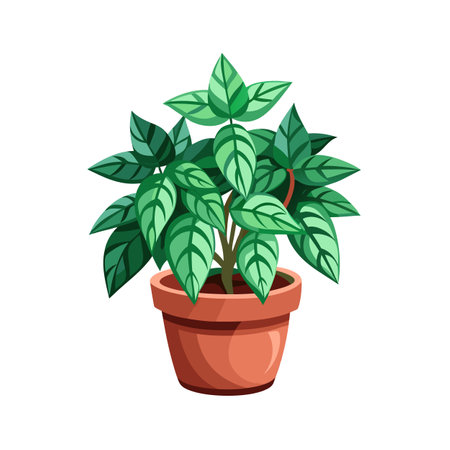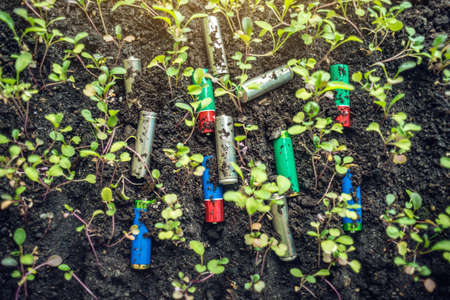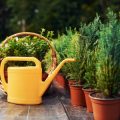1. What Are USDA Hardiness Zones?
The USDA Plant Hardiness Zone Map is an essential tool for gardeners and growers across the United States. It helps determine which plants are most likely to thrive in a specific location by dividing the country into zones based on average annual minimum winter temperatures. This way, you can choose plants that are best suited for your local climate.
How the Zones Are Determined
The U.S. Department of Agriculture (USDA) created this system by analyzing decades of temperature data. Each zone represents a 10-degree Fahrenheit range of average minimum winter temperatures. For more precision, each zone is further divided into “a” and “b” subzones, representing 5-degree differences.
Example of USDA Zones and Temperature Ranges
| Zone | Subzone | Average Minimum Temperature (°F) |
|---|---|---|
| 3 | a | -40 to -35 |
| 3 | b | -35 to -30 |
| 6 | a | -10 to -5 |
| 6 | b | -5 to 0 |
| 9 | a | 20 to 25 |
| 9 | b | 25 to 30 |
Why It Matters for Gardeners
Knowing your USDA zone helps you avoid planting species that cant survive your areas coldest winters. For example, a plant rated for Zone 7 won’t make it through the winter in Zone 4 without special protection. On the other hand, a plant that thrives in Zone 3 might suffer in the heat of Zone 9.
Where to Find Your Zone
You can easily find your zone using the interactive USDA Plant Hardiness Zone Map available on the USDA website. Just enter your ZIP code, and youll get detailed information about your regions zone, helping you make informed decisions about what to grow in your garden.
2. Why Hardiness Zones Matter for Gardeners
If youre planning a garden in the U.S., understanding your USDA Hardiness Zone is one of the most important first steps. These zones help gardeners choose plants that can survive and thrive in their specific climate. Each zone is based on the average annual minimum winter temperature, which directly affects what types of plants will do well in your area.
How Hardiness Zones Affect Plant Choices
Plants vary widely in their ability to tolerate cold. A plant that grows beautifully in Florida might not survive a single winter in Minnesota. By knowing your hardiness zone, you can select plants that are more likely to survive through seasonal changes, especially during cold months.
Plant Survivability
Every plant has a recommended hardiness range. For example, a perennial labeled “Zones 5-9” means it can typically survive winters in those zones. If you live in Zone 4, that plant may not make it through the winter unless protected or treated as an annual.
Seasonal Growth Patterns
Understanding your zone also helps with timing—when to plant seeds or transplants outdoors, when to expect blooms, and when to harvest. Plants respond differently depending on how long the growing season is and how extreme the temperatures get.
Hardiness Zone Guide by Region
Heres a simple guide to show how zones relate to different parts of the country:
| Zone | Region Example | Average Winter Low (°F) | Common Suitable Plants |
|---|---|---|---|
| 3-4 | Northern Midwest (e.g., Minnesota) | -40 to -20°F | Conifers, hardy perennials like lupines and peonies |
| 5-6 | Northeast & Central U.S. (e.g., Ohio) | -20 to 0°F | Tulips, lilacs, hostas, many vegetables |
| 7-8 | Southeast & Pacific Northwest (e.g., North Carolina, Oregon) | 0 to 20°F | Azaleas, camellias, blueberries |
| 9-10 | Southern California & Florida | 20 to 40°F | Citrus trees, succulents, tropical flowers |
The Bottom Line for Gardeners
Your USDA Hardiness Zone acts like a roadmap for successful planting. It helps you avoid the disappointment of choosing plants that wont survive your local winters and gives you confidence when selecting perennials, shrubs, or trees. Whether youre growing vegetables or flowers, matching your plant choices to your zone sets you up for a healthier and more vibrant garden.

3. How to Find Your Zone and What It Means
Knowing your USDA Hardiness Zone is the first step to choosing plants that will thrive in your garden. Thankfully, finding your zone is quick and easy with the help of a few online tools and local resources.
Using Online Tools to Locate Your USDA Zone
The most reliable way to find your hardiness zone is by using the official USDA Plant Hardiness Zone Map. This interactive map allows you to enter your ZIP code and instantly see which zone you’re in.
Recommended Online Tools:
- USDA Hardiness Zone Map
- The Old Farmer’s Almanac Planting Calendar
- Local university extension websites (such as those from land-grant universities)
What the Zone Number Tells You
Each USDA zone is based on the average annual minimum winter temperature. Zones are divided into 10°F increments, ranging from Zone 1 (coldest) to Zone 13 (warmest). Each zone is further split into “a” and “b” subsections for more precise temperature ranges.
| Zone | Temperature Range (°F) | Typical U.S. Regions |
|---|---|---|
| 3a – 3b | -40 to -30°F | Northern Minnesota, North Dakota |
| 5a – 5b | -20 to -10°F | Parts of New York, Colorado, Illinois |
| 7a – 7b | 0 to 10°F | Tennessee, Virginia, Oklahoma |
| 9a – 9b | 20 to 30°F | Florida, Southern Texas, Coastal California |
| 11+ | Above 40°F | Southern Florida, Hawaii |
How to Use This Information for Gardening Success
Your zone number helps determine which perennials can survive winter in your area. For example, if youre in Zone 6b, look for plants labeled hardy to Zone 6 or lower. Annuals are less affected by zones since they complete their life cycle within one growing season, but knowing your last frost date (often listed alongside your zone info) helps with proper planting timing.
A Quick Tip:
If youre right on the edge between two zones or gardening in a microclimate (like an urban area or near a body of water), its wise to choose plants that are hardy one zone colder than yours for added safety.
Understanding what your USDA zone means gives you a solid foundation for making smart plant choices and enjoying a thriving garden year-round.
4. Top Plants for Each Hardiness Zone
Knowing your USDA hardiness zone is the first step to choosing plants that will thrive in your garden. Below is a helpful breakdown of popular and reliable plant choices—including vegetables, flowers, shrubs, and trees—recommended for some of the major USDA hardiness zones across the United States.
USDA Zone 3 (Average Minimum Temperature: -40°F to -30°F)
| Plant Type | Recommended Plants |
|---|---|
| Vegetables | Kale, carrots, lettuce, peas |
| Flowers | Columbine, daylilies, peonies |
| Shrubs | Dogwood, lilac, juniper |
| Trees | Aspen, birch, spruce |
USDA Zone 5 (Average Minimum Temperature: -20°F to -10°F)
| Plant Type | Recommended Plants |
|---|---|
| Vegetables | Broccoli, spinach, potatoes, beets |
| Flowers | Black-eyed Susan, coneflowers, tulips |
| Shrubs | Hydrangea, spirea, viburnum |
| Trees | Maple, crabapple, white pine |
USDA Zone 7 (Average Minimum Temperature: 0°F to 10°F)
| Plant Type | Recommended Plants |
|---|---|
| Vegetables | Tomatoes, peppers, squash, beans |
| Flowers | Zinnias, marigolds, roses |
| Shrubs | Azalea, butterfly bush, boxwood |
| Trees | Crape myrtle, dogwood, redbud |
USDA Zone 9 (Average Minimum Temperature: 20°F to 30°F)
| Plant Type | Recommended Plants |
|---|---|
| Vegetables | Okra, eggplant, sweet corn, cucumbers |
| Flowers | Lantana, hibiscus, petunias |
| Shrubs | Loropetalum, oleander, gardenia |
| Trees | Citrus trees (like lemon and orange), palm trees, magnolia |
USDA Zone 11 (Average Minimum Temperature: above 40°F)
| Plant Type | Recommended Plants |
|---|---|
| Vegetables | Tropical crops like taro and sweet potatoes year-round growing possible for most veggies with shade management |
| Flowers | Bougainvillea, bird of paradise, orchids (outdoors) |
| Shrubs | Croton, hibiscus varieties, ixora |
| Trees | Mango tree, banana plant, avocado tree |
5. Microclimates and Other Considerations
While USDA Hardiness Zones offer a helpful starting point for understanding what plants can survive winter in your area, they don’t tell the whole story. Even within a single zone, local conditions—known as microclimates—can significantly impact how well certain plants grow. Factors like elevation, proximity to bodies of water, and urban environments all play a role in shaping these microclimates.
What Is a Microclimate?
A microclimate is a small area where the climate differs from the surrounding region. This could be your backyard, a courtyard between buildings, or even a sunny spot near a brick wall. These areas might be warmer, cooler, wetter, or drier than the official USDA zone suggests.
Common Microclimate Influences
| Factor | Effect on Climate | Impact on Gardening |
|---|---|---|
| Elevation | Higher elevations are usually cooler | May shorten growing season or require hardier plants |
| Proximity to Water | Bodies of water moderate temperature swings | Can extend growing season; reduces frost risk |
| Urban Heat Island Effect | Cities retain more heat due to buildings and pavement | Makes urban areas warmer; may allow for less hardy plants |
| Slope and Sun Exposure | South-facing slopes get more sun (in Northern Hemisphere) | Soil warms faster; good for early planting and heat-loving crops |
| Wind Protection | Sheltered spots are less exposed to cold winds | Improves survival rate of sensitive plants in colder months |
Why It Matters for Your Garden
You might live in Zone 7, but if your backyard is shaded and at the bottom of a hill, it could behave more like Zone 6. On the other hand, a sunny patio next to your home’s south-facing wall might act like Zone 8. Recognizing these differences helps you make smarter choices about plant selection and placement.
Tips for Working with Microclimates:
- Observe your yard: Take note of which areas warm up first in spring and which stay frosty longer.
- Experiment: Try growing borderline-hardy plants in warmer microclimates like near walls or fences.
- Create your own microclimate: Use raised beds, mulch, or windbreaks to modify local conditions.
- Select appropriate plants: Choose varieties that match both your USDA zone and your specific garden conditions.
Understanding microclimates lets you fine-tune your garden beyond just relying on hardiness zones. With a little observation and planning, you can turn challenging spots into productive growing spaces.
6. Tips for Successful Gardening in Any Zone
Gardening success starts with understanding your USDA Hardiness Zone, but it doesn’t stop there. Every zone has its own set of climate conditions, and knowing how to work with them can make a big difference in the health and productivity of your garden. Here are some practical tips that apply across zones, tailored to suit different climates.
Soil Preparation
Good soil is the foundation of any thriving garden. No matter your zone, start by testing your soil’s pH and nutrient levels. This helps you know whether to amend it with compost, lime, or other additives. In colder zones (Zones 3–6), raised beds can help warm the soil faster in spring. In warmer zones (Zones 8–11), adding organic matter improves water retention during hot months.
Common Soil Additives by Need
| Soil Issue | Recommended Additive | Purpose |
|---|---|---|
| Low pH (acidic) | Lime | Raises pH |
| Poor drainage | Compost or sand | Improves structure |
| Nutrient-poor | Aged manure or compost | Adds nutrients |
| Clay-heavy soil | Gypsum + compost | Breaks up clay particles |
Watering Wisely
Your zone influences how often and how much to water. Hotter zones may require daily watering during summer, while cooler zones might only need watering once or twice a week. Early morning is the best time to water—this reduces evaporation and helps prevent fungal diseases.
Irrigation Tips by Climate Type
| Climate Type | Watering Frequency | Tips |
|---|---|---|
| Arid (e.g., Southwest) | Daily or every other day in summer | Use mulch to retain moisture; drip irrigation is ideal. |
| Temperate (e.g., Midwest) | 2–3 times per week depending on rainfall | Monitor soil moisture before watering. |
| Humid (e.g., Southeast) | 1–2 times per week if no rain | Avoid overwatering to prevent root rot. |
| Cold (e.g., Northern Plains) | Sparingly in early spring/fall; more in summer as needed | Avoid watering during frost periods. |
Frost Protection Strategies
If you live in a zone with late spring frosts or early fall freezes, protecting your plants is crucial. Use row covers, cloches, or old bedsheets to cover plants overnight when frost is expected. Raised beds and mulching also help insulate roots from cold snaps.
Frost Dates and Protection Tools by Zone Range
| Zone Range | Last Spring Frost (approx.) | First Fall Frost (approx.) | Suggested Protection Tools |
|---|---|---|---|
| Zones 3–5 | May 15–June 1 | Sept 15–Oct 1 | Cloches, heavy row covers, cold frames |
| Zones 6–7 | April 15–May 10 | Oct 10–Nov 1 | Lighter row covers, mulch for insulation |
| Zones 8–9+ | No regular frosts or very late ones (if any) | N/A or very late fall/winter only if at all | Potted plant relocation, occasional light cover use during rare cold snaps |
Timing Your Plantings for Best Results
The right planting time depends heavily on your zone’s average frost dates and seasonal temperatures. Cool-season crops like lettuce, peas, and spinach go into the ground as soon as the soil is workable—often weeks before the last frost in milder zones. Warm-season crops like tomatoes and peppers should wait until after the last frost date has passed.
Planting Calendar Overview by Zone Grouping (Spring/Summer Crops)
| Zone Grouping | Crops to Start Indoors (and When) | Crops to Direct Sow (and When) |
|---|---|---|
| Zones 3–5 (colder regions) | Tomatoes, peppers – Start indoors Feb–March; transplant after May frost risk ends. | Lettuce, carrots – Direct sow mid-April through May when soil warms. |
| Zones 6–7 (moderate regions) | Cucumbers, squash – Start indoors March; transplant late April/early May. | Kale, radishes – Direct sow early April. |
| Zones 8–10+ (warmer regions) | No need to start most crops indoors due to long seasons; can direct sow many crops earlier. | Corn, beans – Direct sow as early as March depending on frost risk. |
A Final Tip:
No matter your hardiness zone, always keep an eye on local weather patterns and adjust your gardening schedule accordingly. Nature doesn’t always stick to the calendar!
This hands-on approach will help you make the most of your USDA Hardiness Zone while giving your plants the best chance to thrive year-round.


